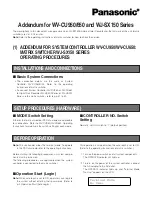
95
Figure 36 IGMP SSM mapping
As shown in
, on an SSM network, Host A, Host B, and Host C run IGMPv1, IGMPv2, and
IGMPv3, respectively. To provide the SSM service for Host A and Host B, you must configure the
IGMP SSM mapping feature on Router A.
After IGMP SSM mappings are configured, Router A checks the multicast group address G in the
received IGMPv1 or IGMPv2 report, and performs the following operations:
•
If G is not in the SSM group range, Router A provides the ASM service.
•
If G is in the SSM group range but does not match any IGMP SSM mapping, Router A drops the
report.
•
If G is in the SSM group range and matches IGMP SSM mappings, Router A translates (*, G) in
the report into (G, INCLUDE, (S1, S2...)) to provide SSM services.
NOTE:
The IGMP SSM mapping feature does not process IGMPv3 reports.
For more information about SSM group ranges, see "Configuring PIM."
IGMP proxying
As shown in
, in a simple tree-shaped topology, it is not necessary to run multicast routing
protocols, such as PIM, on edge devices. Instead, you can configure IGMP proxying on these
devices. With IGMP proxying configured, the edge device acts as an IGMP proxy:
•
For the upstream IGMP querier, the IGMP proxy device acts as a host.
•
For the downstream receiver hosts, the IGMP proxy device acts as an IGMP querier.
IGMPv1 report
IGMPv2 report
IGMPv3 report
Router A
Querier
Host A (IGMPv1)
Host B (IGMPv2)
Host C (IGMPv3)
Receiver
Receiver
Receiver
SSM
















































